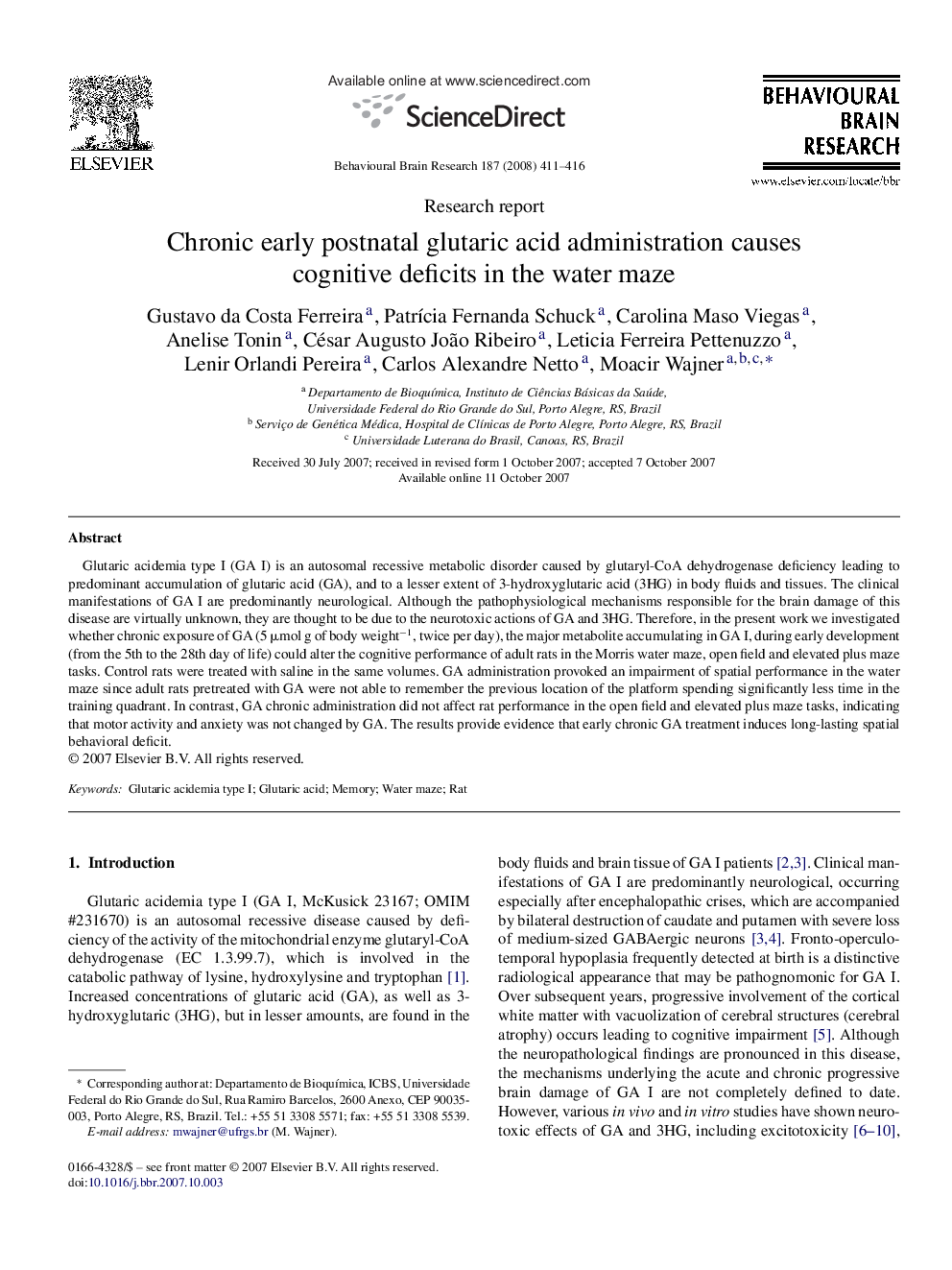| Article ID | Journal | Published Year | Pages | File Type |
|---|---|---|---|---|
| 4315536 | Behavioural Brain Research | 2008 | 6 Pages |
Glutaric acidemia type I (GA I) is an autosomal recessive metabolic disorder caused by glutaryl-CoA dehydrogenase deficiency leading to predominant accumulation of glutaric acid (GA), and to a lesser extent of 3-hydroxyglutaric acid (3HG) in body fluids and tissues. The clinical manifestations of GA I are predominantly neurological. Although the pathophysiological mechanisms responsible for the brain damage of this disease are virtually unknown, they are thought to be due to the neurotoxic actions of GA and 3HG. Therefore, in the present work we investigated whether chronic exposure of GA (5 μmol g of body weight−1, twice per day), the major metabolite accumulating in GA I, during early development (from the 5th to the 28th day of life) could alter the cognitive performance of adult rats in the Morris water maze, open field and elevated plus maze tasks. Control rats were treated with saline in the same volumes. GA administration provoked an impairment of spatial performance in the water maze since adult rats pretreated with GA were not able to remember the previous location of the platform spending significantly less time in the training quadrant. In contrast, GA chronic administration did not affect rat performance in the open field and elevated plus maze tasks, indicating that motor activity and anxiety was not changed by GA. The results provide evidence that early chronic GA treatment induces long-lasting spatial behavioral deficit.
